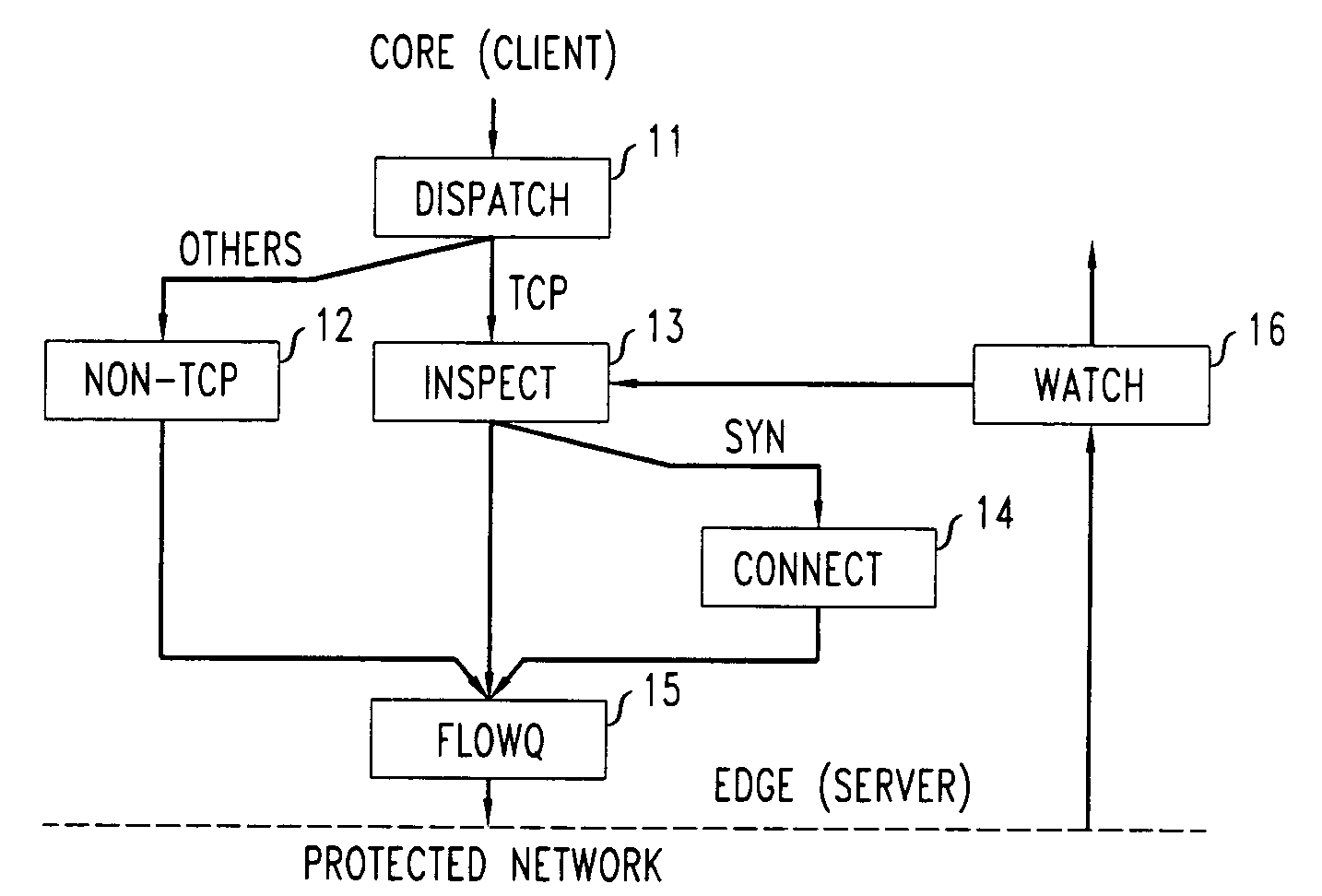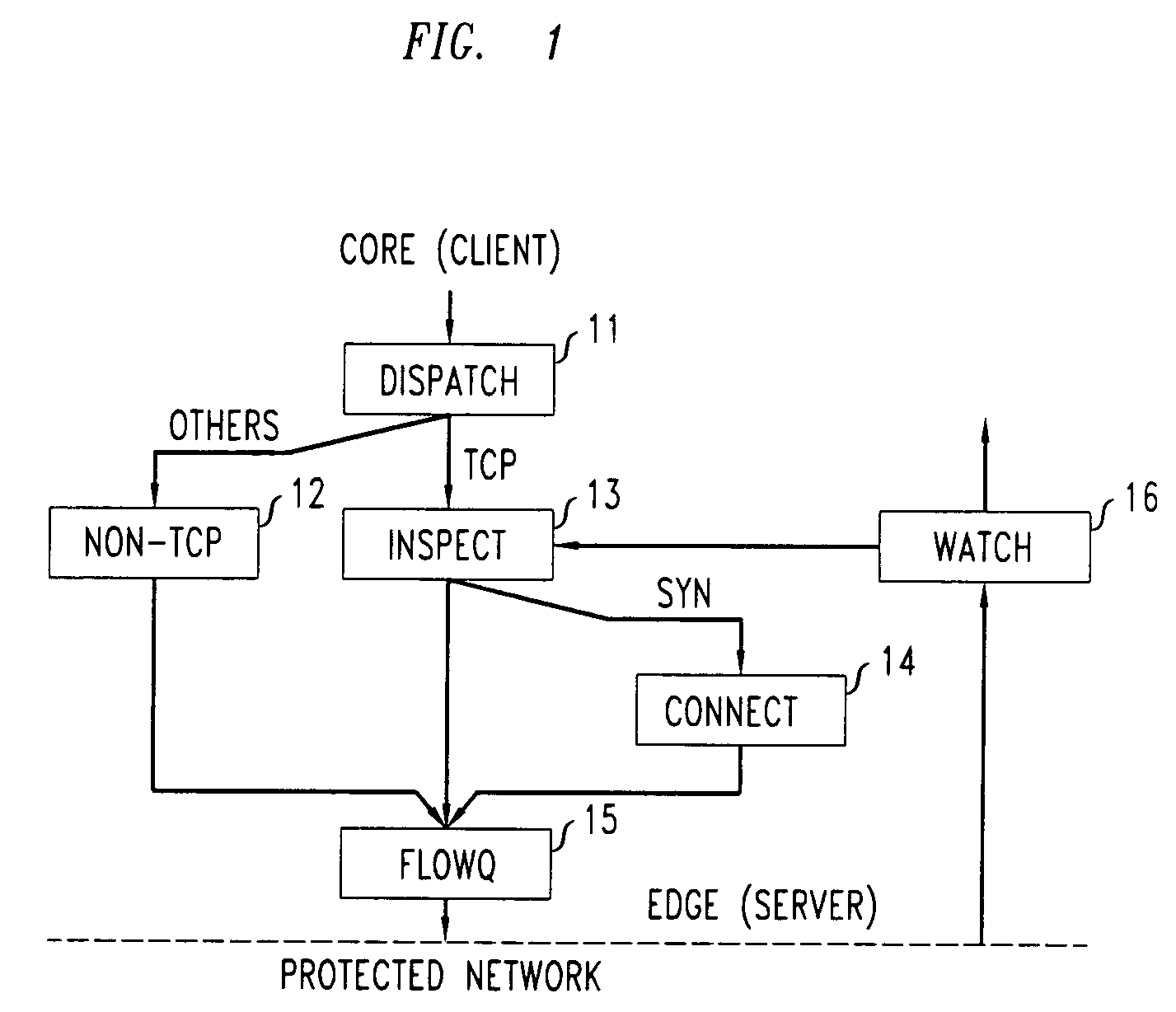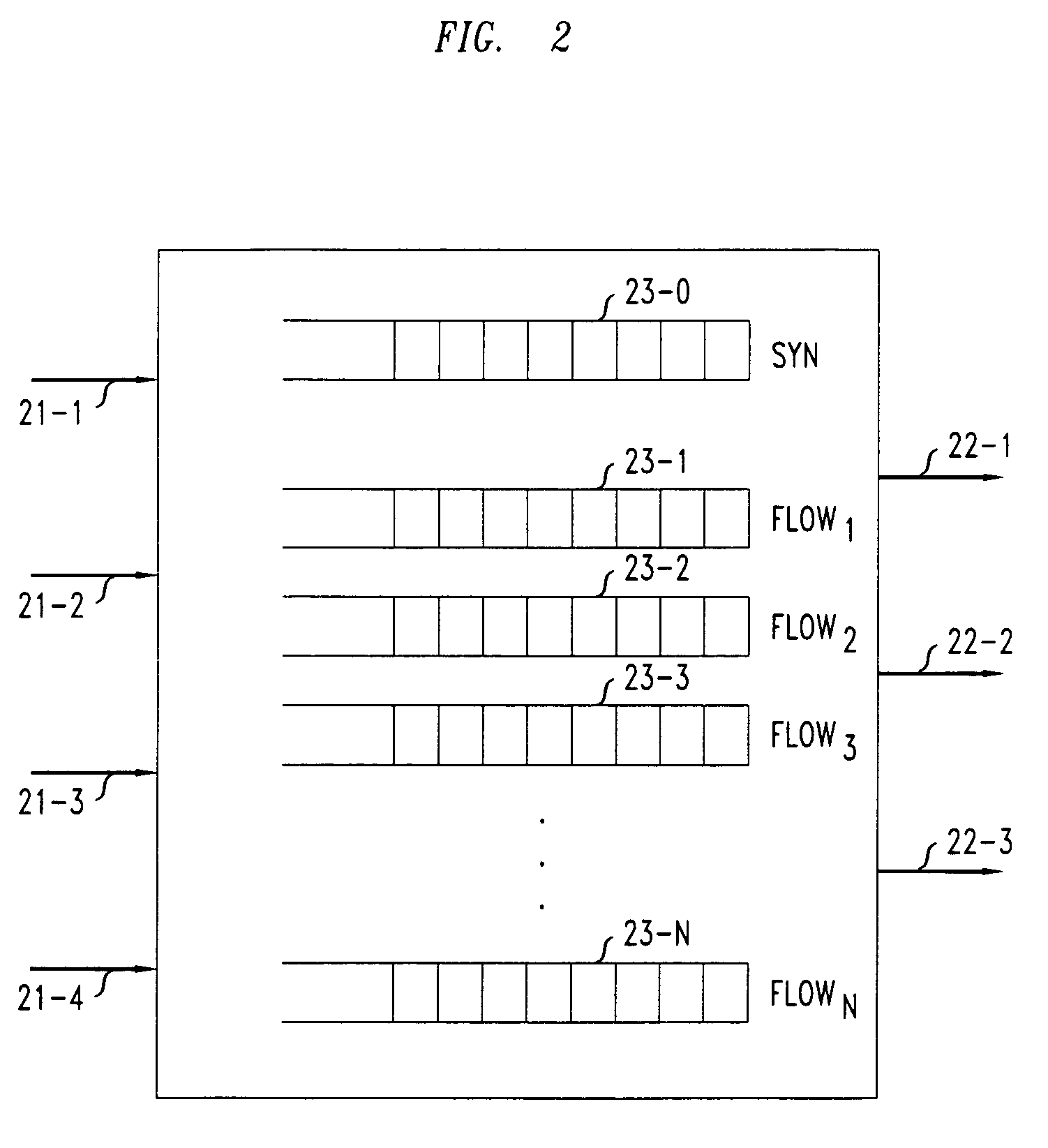Method and apparatus for defending against SYN packet bandwidth attacks on TCP servers
a technology of tcp server and tcp bandwidth, applied in the field of internet security, can solve the problems of service disruption, ddos attack tools may tend to mutate and evolve over time, and requires network-wide cooperation and coordination, and achieve the effect of effectively dealing with and reducing the likelihood of causing livelock at downstream tcp servers
- Summary
- Abstract
- Description
- Claims
- Application Information
AI Technical Summary
Benefits of technology
Problems solved by technology
Method used
Image
Examples
Embodiment Construction
[0017]FIG. 1 shows a functional block diagram of a DDoS gateway which incorporates a SYN bandwidth attack protection mechanism in accordance with an illustrative embodiment of the present invention. The illustrative DDoS gateway is advantageously positioned at network edges, one hop upstream from the link to be protected. In operation of the illustrative gateway, packets arriving from the core are first dispatched by Dispatch module 11, to isolate TCP packets from others. (Non-TCP packets are handled by Non-TCP module 12.) Data packets with prior states at the gateway may be sorted into various queues, subject to certain buffer management policies, as determined by Inspect module 13. SYN packets, however, do not require prior states to be forwarded and are thus advantageously handled separately by Connect module 14. Data packets, SYN packets, and packets from non-TCP protocols are then scheduled to appear on the protected link by FlowQ module 15. For the reverse direction, packets f...
PUM
 Login to View More
Login to View More Abstract
Description
Claims
Application Information
 Login to View More
Login to View More - R&D
- Intellectual Property
- Life Sciences
- Materials
- Tech Scout
- Unparalleled Data Quality
- Higher Quality Content
- 60% Fewer Hallucinations
Browse by: Latest US Patents, China's latest patents, Technical Efficacy Thesaurus, Application Domain, Technology Topic, Popular Technical Reports.
© 2025 PatSnap. All rights reserved.Legal|Privacy policy|Modern Slavery Act Transparency Statement|Sitemap|About US| Contact US: help@patsnap.com



